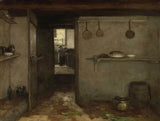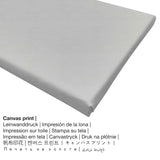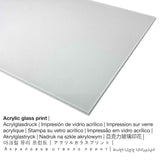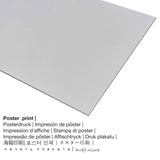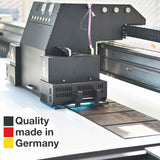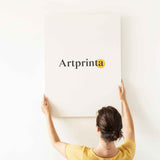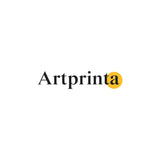Johan Hendrik Weissenbruch, 1888 - Cellar nke Ụlọ Artist na The Hague - ọmarịcha akwụkwọ nka.
Ụtụ gụnyere. Mbupu gbakọrọ na ndenye ọpụpụ.
Ozi nka nka izizi si Rijksmuseum website (© Nwebiisinka - site Rijksmuseum - Rijksmuseum)
On rainy days even a Hague School artist could not work outside. Weissenbruch would then turn to his own house, painting views of the cellar, attic and courtyard. Such paintings allowed him to study the effect of light and the resulting range of colours. A few green cabbage leaves on the tile floor enliven the otherwise subdued palette.
Background information on the modern art artwork with the title "Cellar of the Artist’s Home in The Hague"
Nke a kariri 130 ihe nka afọ Cellar of the Artist’s Home in The Hague e kere ya Johan Hendrik Weissenbruch in 1888. Today, the work of art is included in the digital collection of Rijksmuseum, nke bụ nnukwu ihe ngosi nka maka nka na akụkọ Dutch site na Middle Ages ruo ugbu a. Site n'ikike nke: Rijksmuseum (ikike ngalaba ọha).Moreover, the work of art has the following creditline: . Further, the alignment of the digital reproduction is landscape and has a ratio of 4 : 3, meaning that ogologo bụ 33% ogologo karịa obosara. Johan Hendrik Weissenbruch was a painter, whose artistic style can be classified as Realism.
Akụrụngwa ndị ahịa anyị nwere ike ịhọrọ
The product dropdown list gives you the opportunity to select your favorite size and material. We allow yout to choose among the following variants:
- Mbipụta iko acrylic (nke nwere ezigbo mkpuchi iko): An acrylic glass print, which is often labelled as a print on plexiglass, changes an original artwork into wonderful home decoration. Further, it offers a good alternative option to aluminium and canvas prints. Your own copy of the work of art is being custom-made thanks to the help of state-of-the-art UV direct printing machines. The major advantage of a plexiglass print is that contrasts plus smaller image details will be exposed thanks to the fine tonal gradation of the picture. The acrylic glass protects your custom art print against sunlight and external influences for up to six decades.
- Bipụta akwụkwọ mmado n'ihe kwaaji: A poster is a printed sheet of canvas paper with a fine surface finish. Please keep in mind, that depending on the absolute size of the poster print we add a white margin of around 2 - 6cm around the print motif in order to facilitate the framing.
- Aluminom dibond mbipụta (ọla): Aluminium Dibond prints are metal prints with a true depth effect. The Direct Print on Aluminum Dibond is the best introduction to art replicas with alu. The bright and white components of the work of art shine with a silk gloss, however without any glare. The colors of the print are bright and vivid in the highest definition, details are crisp and clear, and you can literally notice the matte appearance of the print.
- Mbipụta kanvas: A canvas print, not to be mistaken with a real artwork painted on a canvas, is an image printed on a cotton canvas fabric. A canvas creates a cosy and enjoyable appearance. A canvas print has the advantage of being relatively low in weight, which implies that it is easy and straightforward to hang the Canvas print without extra wall-mounts. Therefore, canvas prints are suited for all types of walls.
metadata nka nka
| Aha onye nka: | Johan Hendrik Weissenbruch |
| Gender: | nwoke |
| Obodo onye nka: | Dutch |
| Ọrụ: | onye na-ese ihe |
| Country: | mba netherland |
| Otu nka: | omenkà nke oge a |
| styles: | Ihe ngosi |
Data ndabere gbasara nka nka izizi
| Akụkụ nka: | "Cellar of the Artist’s Home in The Hague" |
| Nhazi nka: | sere |
| Okwu nche anwụ: | nkà nke oge a |
| oge: | 19th narị afọ |
| Emepụtara na: | 1888 |
| Afọ nka: | 130 afọ |
| Egosiputara na: | Rijksmuseum |
| Ebe ngosi nka: | Amsterdam, Netherlands |
| Weebụsaịtị nke ihe ngosi nka: | www.rijksmuseum.nl |
| Ụdị nka nka: | ngalaba ọha |
| Site n'aka: | Rijksmuseum |
Ozi ngwaahịa ahaziri
| Ụdị edemede: | ọmarịcha nka |
| Usoro mmeghari: | dijitalụ mmeputakwa |
| Usoro mmepụta: | Mbipụta UV ozugbo |
| Mmalite nke ngwaahịa a: | emepụtara na Germany |
| Stockdị ngwaahịa: | na mmepụta ihe |
| Ojiji ngwaahịa: | nchịkọta nka (mmeputakwa), foto mgbidi |
| Nhazi: | nhazi odida obodo |
| Oke akụkụ: | 4: 3 - ( Ogologo: obosara) |
| Nsonaazụ: | ogologo bụ 33% ogologo karịa obosara |
| Ụdị dị iche iche dị: | ígwè ebipụta (aluminium dibond), acrylic glass print (nwere ezigbo mkpuchi iko), mbipụta akwụkwọ mmado (akwụkwọ kwaaji), akwụkwọ akwa akwa. |
| Mbipụta kanvas (akwa akwa n'elu etiti ihe ndọtị) ụdị nha dị iche iche: | 40x30cm - 16x12", 80x60cm - 31x24", 120x90cm - 47x35", 160x120cm - 63x47" |
| Mpempe iko acrylic (nwere ezigbo mkpuchi iko) nha: | 40x30cm - 16x12", 80x60cm - 31x24", 120x90cm - 47x35", 160x120cm - 63x47" |
| Ụdị akwụkwọ mmado (akwụkwọ kwaaji) dị iche iche: | 40x30cm - 16x12", 80x60cm - 31x24", 120x90cm - 47x35" |
| Nha aluminom dibond (ihe aluminom) nha: | 40x30cm - 16x12", 80x60cm - 31x24", 120x90cm - 47x35" |
| Nhazi mbipụta nka: | adịghị |
Important note: We try our best in order to describe our art products as closely as possible and to display them visually on the product detail pages. Still, some tone of the print materials and the print result may vary marginally from the image on your monitor. Depending on the screen settings and the quality of the surface, color pigments might not be printed one hundret percent realistically. Because our fine art prints are processed and printed by hand, there might as well be slight differences in the size and exact position of the motif.
Nwebiisinka © - Artprinta.com (Artprinta)

